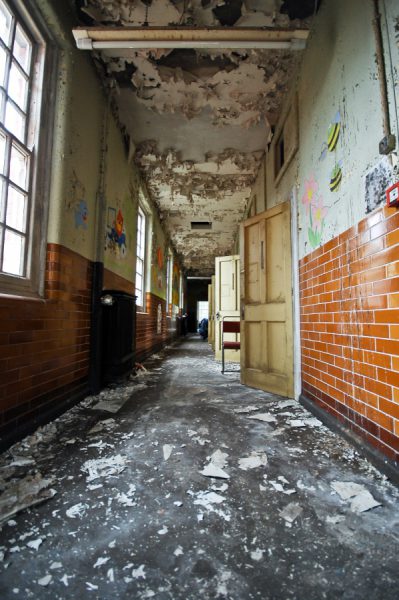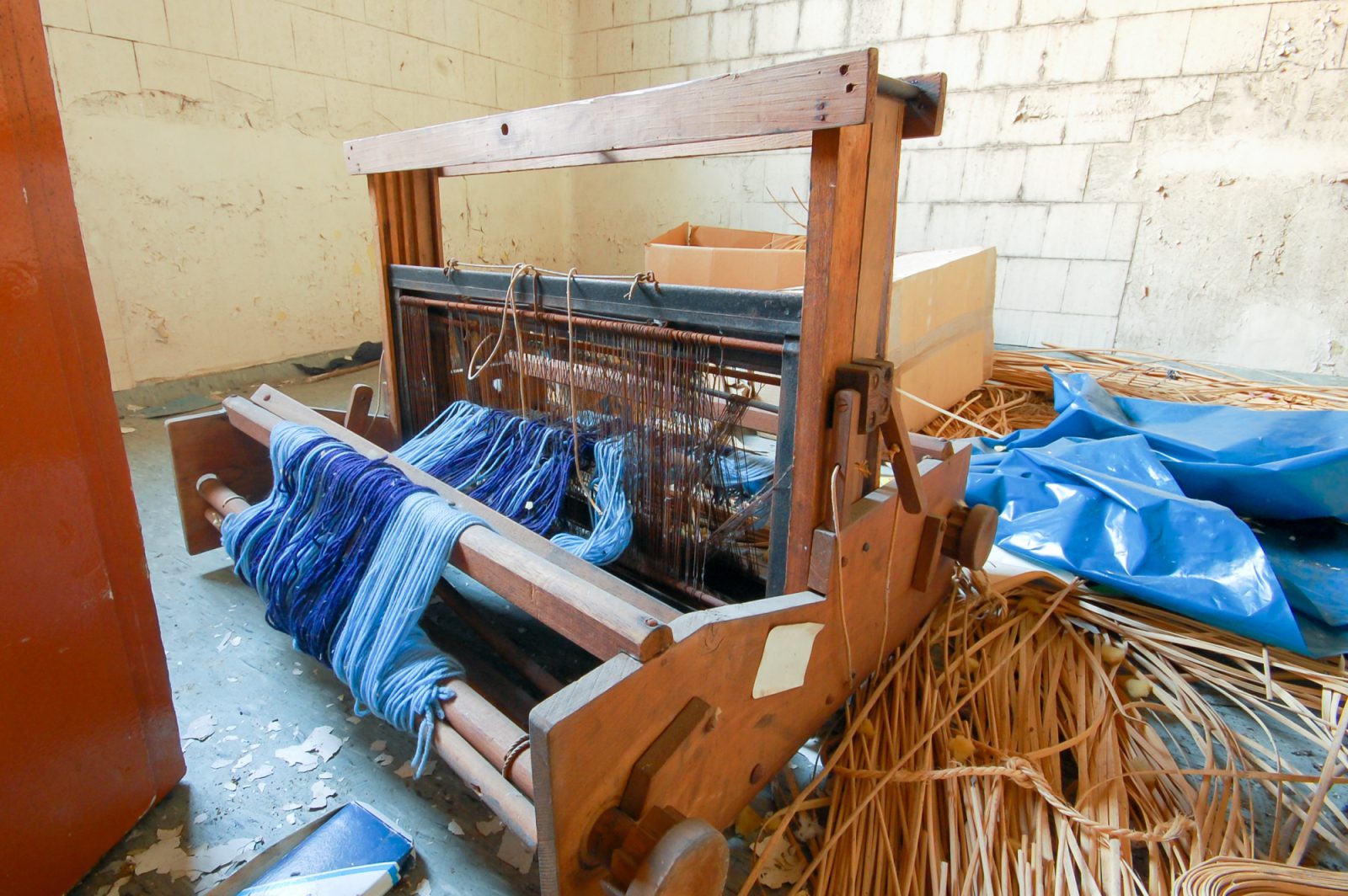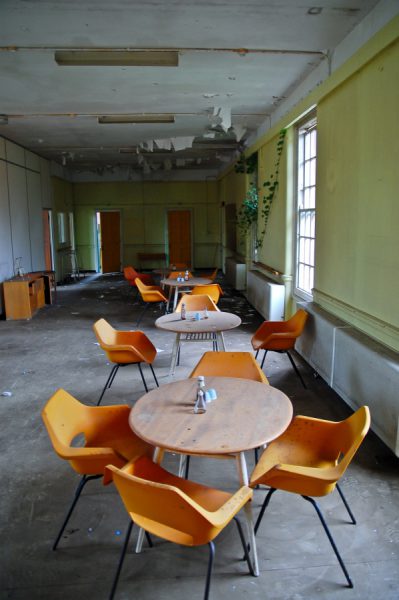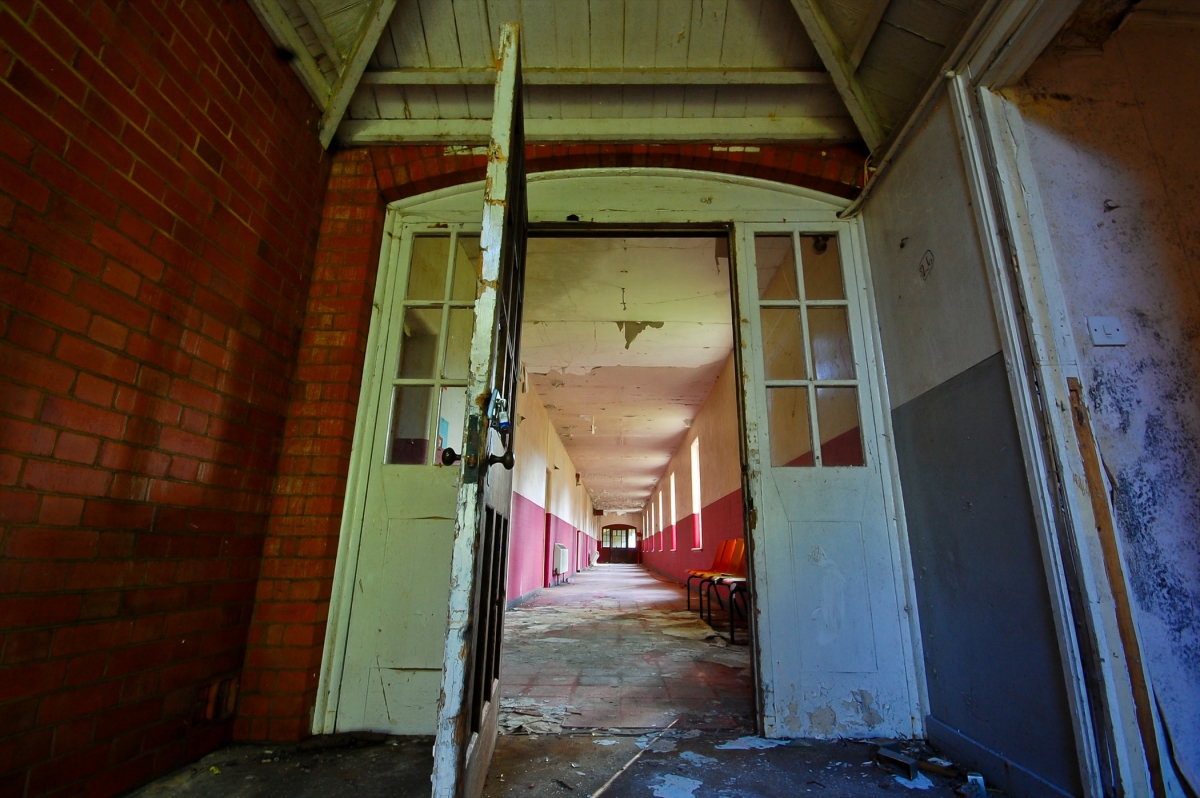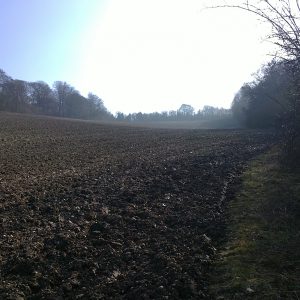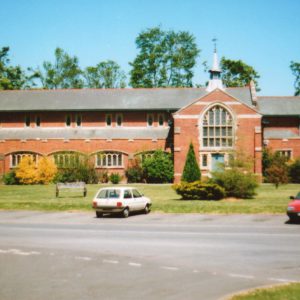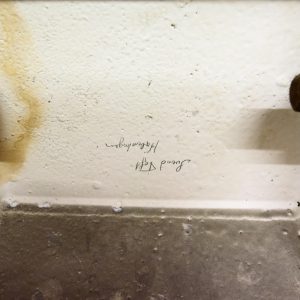We are not the first. We will not be the last (whoever is, turn the bloody lights off). We do not do things better. We hopefully do not do things any worse? We are a copy of what came before us. We don’t subscribe to being prolific pioneers, we are weekend warriors in it for the shits and giggles. And ten years ago we discovered that it is not really worth doing something, unless someone somewhere, would prefer you not to be doing it. We started poking our noses into abandoned buildings, had an aggravated trespass notice slapped in our faces and found ourselves entering into the world of Urban Exploration. Over the years we have seen some inspiring places and made some good friends along the way. Furthermore, we have had run-ins with irate security guards, pissed off land pirates and surprisingly pleasant police officers. I do not think we ever expected to be actively exploring ten years after we first set foot inside Pyestock, or build a website, but it still interests us and keeps us going!
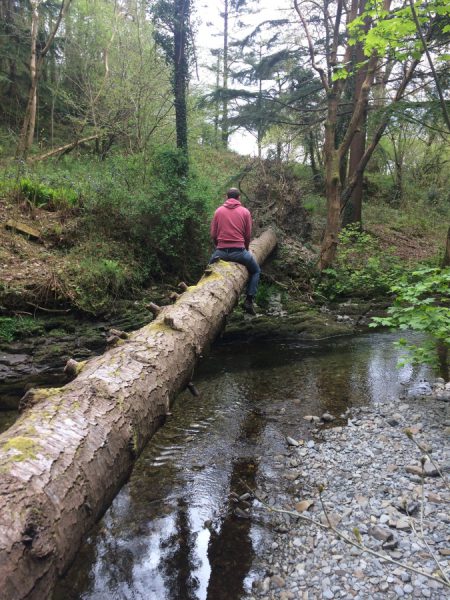
Rewind ten years to when both of us were studying at university and on separate computers in separate parts of the country, we stumbled upon a set of photographs posted on a music forum of the then recently closed Rover Longbridge plant. These photographs piqued our interest and through the miracle of the internet we found Simon Cornwell’s formative UrbexUK website, and the burgeoning forum 28dayslater. We devoured everything we could and subsequently lost many hours to people’s stories and photographs and it left us wanting more. We are probably not the only explorers from this time that were inspired by what we saw online – the scene has started to gain exposure in the press and grow.

After a quick phone call to each other, and a little research, did we discover the National Gas Turbine Establishment down the road in Farnborough. Who would not want to walk around acres and acres of a cold war jet engine research establishment? Retrospectively, things were vastly different on our first explore. We would typically approach a site with a fuzzy printout from Flashearth, an AA Road Map for navigation, a small point and shoot camera and an AA Maglite. There was always a high chance back then of ending up hopelessly lost in the middle of a housing estate desperately trying to figure out where on earth you were. Now you can easily tap things into the search on your smartphone, grab a dSLR and you are good to go. Hell, even the largest forum has a comprehensive map of UK locations that save the bone idle from doing any research or simply driving about (we must admit it is sometimes handy for a rainy weekend).

It’s probably around this point in our trip down memory lane that we should also admit to wandering about abandoned places as kids, but that would be clichéd right? Probably not, as it was somewhere to go and have a crafty smoke, bb gun war and hang out away from parents. We had a misspent youth crashing around a derelict holiday camp on the Isle of Wight and building dirt jumps next to an old Anti-Aircraft Emplacement in the village we grew up in. We have always wanted to know what is going on behind the scenes, it is our human instinct to see what is over the next hill. Over our lifetimes, society has built a construct that rules should be obeyed, boundaries are set and routes followed; all closely guarded by the rise of Health and Safety practices, scaremongering in The Press and ‘The Nanny State’. Blow that.

Urban Exploration throws caution and common knowledge to the wind and asks, what’s over there? Can I climb that scaffolding? Why is this floor so bouncy? Should I really have eaten all those MacDonald’s? Oh shi—!

Realistically, there is a fence that leads to roaming through empty rooms appraising someone else’s detritus. Contrary to popular belief pushed forward by the Daily Fail Mail recently it is rarely eerie. Although it is an unnerving experience from time to time. An unexpected noise from a building banging in the wind can reach down into the hind brain, hunt about for the right lever and trigger a reaction that heightens the senses and dumps a whole chunk of adrenaline into the system. This has previously caused us to hide in cupboards for no other reason than a loose door thumping against its frame. It sometimes takes a special blend of nerves and foolishness to stay put and not scamper off into the distance. All this has culminated in ten years’ worth of tales and stories from the other side of the fence, normally shared over a pint and rarely on this blog.

Throughout the last ten years we have ventured around UK and Europe taking in the sights, sounds and smells of old abandoned buildings. Alongside all of this we have restored an ROC post in Sussex, helped out with the efforts at RAF Wartling to keep it dry, become involved in the relaunch and running of the County Asylums website and built this website to publish our photos on and share our stories. In hindsight, our first website was not that great – it was a loose collection of images and words with no real structure. After finding a book in the library, learning some code and writing a history, we found our feet and the website developed. We set about learning some more code and we took it further, got out of our depth and finally decided to install WordPress after our hand was forced when a previous hosting service killed our website and then professed their innocence. It was an exploring friend who saved our bacon, and to this day, keeps us online. We owe him much scrumpy. Alongside all this, the exploring world has changed immensely over the last decade. Forums are on their death beds, Social Media has become the primary playground of the new generation of explorer and the older guard has driven themselves out of view in an effort for privacy, family life and careers. Forums are dead. Likes and shares on Instagram, Youtube and Facebook are the order of the day today, unfortunately (you can find us on all three, hah!).

So, what is next? To be entirely honest, we are not sure really. There will always be something we want to explore and somewhere we want to go. We will continue to keep the website online and up to date; there is nothing more satisfying than hearing from people about how much they enjoy our site! It may undergo a revamp at some point in the near future to give a fresher look (Update 2018: welcome to the new look) and the photography section will be expanded too. We have talked about making a photobook; we should probably publish one about Urbex Loo’s, or Derelict Staircases, as a tongue in cheek reaction to the highly polished and stylised ones creeping onto book shop shelves of late. We may even venture into making a video, but only if everyone is happy to watch 60 minutes of shaky camera footage of nothing in particular.
On a final note, there is something that we have discovered in the last ten years of running this website. It takes a lot of bloody effort writing blog posts. If we sit down and write a blog post and leave it unfinished in the drafts folder, it’ll rarely get posted as the original thread is lost and the post starts to aimlessly wander (a bit like this one really). We tinker with it, we fiddle with it and six months later, we delete it in frustration at the original idea being lost. Hiding in the background there sits an entire post written our 3 days on Chernobyl that we have edited numerous times since we started writing it . We just cannot get it to flow in a way we are happy with it as what we think we be a jovial post turns into mindless drudgery. The same goes for forays into Ireland and Scotland to look at ROTOR bunkers, or the West Country. The list goes on.
As part of turning Ten, here is a look at some mediocre explores and favourite photographs from the last decade. Bare with us, on some explores our inspiration goes no further than popping our heads into a room, muttering ‘that’s nice’ to ourselves, snapping a photograph and walking off. Other times, the celestial bodies align in our favour and we walk away with a set of images that one day will hang proudly on our walls.
‘Don’t rush, take as many of photos as you can. It’s possible you may not see this place again.’
West Middlesex Hospital Morgue
The main hospital complex was in the throes of demolition preparation when we turned up with our cameras and we initially found it uninspiring. So why does this explore sit in our mind? Having not been exploring that long, this was the first place we explored off the cuff. No research beforehand, no help, we simply turned up and climbed over a wall, and after we had disentangled ourselves from a mess of service pipes, figured a way in. It was also the first time exploring solo. A liberating experience, right up until the point a security guard hammered on the boarded windows of the Morgue whilst we were standing on the opposite side. We were like a pet caught eating the Sunday roast off of the counter top; our hind brain was leading our legs towards the door whilst we still attempted to take photographs of our surroundings. The morgue was the highlight, 3 ceramic slabs, a 36 body fridge including a bio-hazard section and paraphernalia all over. Lovely. Morbid, but lovely.

Cane Hill Hospital, Croydon
Needs no introduction to be honest. We loved it. Well, our second trip made us love it. Our first trip was a paranoid blur worrying about dogs and where to safely have breakfast. Do we need to say more? Cat and mouse games with security, vast amounts of paraphernalia left behind, wards with beds and acres of buildings. An explorers paradise; whole days were lost by many people who ventured in. Other days were lost to not even making it through the fence.
We can vividly remember sitting outside Cane Hill on a summers evening with a handful of other explorers after finding the fence freshly sealed! We had hoped to show one explorer around, who had driven close to 200 miles to get there before demo progressed too far and the charm lost. After a quick phone call to another explorer that ended with no solution to our predicament we headed back to Portnalls Road to leave, only to bump into security making their rounds. Normally, we would leg it at this point, but being cornered and finding them being in a friendly mood, sat on the grass chatting about the demolition. Tails between our legs we went to walk the perimeter fence. As we left we bumped into two other explorer mates who had arrived and hastily decided to make our way back to find another way in. Murphy’s law came into effect and the sodding guard made another guest appearance! This time a quick greeting passed between us and they went on their way. In hindsight, they made a point of stating that they were heading back to the front gate knowing full well what we might do. Whilst we had been talking to the guard, their dog had been going spare and barking at the bushes and nothing would calm it down. Upon returning to our cars later, we discovered that a few more explorers had been hiding flat in the bushes waiting for us to move along and stop bloody well talking to security. This was the same trip where 5/6 stealthy explorers run full pelt into a cupboard of a half demolished ward, thinking it was a corridor, only to hear a slightly squashed cry of “it’s a cupboard” a little too late. We lost all regard for our noise levels after that point.

RAF Bawdsey R3 ROTOR Bunker, Suffolk
Ever driven to the edge of Suffolk to see what is there? Not much in all honesty other than the bracing wind from the North Sea, rural life and a flatness that prevails just about everywhere beyond Ipswich. Until, that is, you happen upon RAF Bawdsey. Home and birth place of the RADAR and what was a mint condition ROTOR R3 underground bunker. We had previously seen RAF Wartling – a damp ruin, RAF Portland – a burnt out shell and RAF Bempton – a gutted hole. It was interesting to see one so intact. No real stories from this one, other than a lot of standing around in the dark waving a torch as though we were attempting to swat a fly.

Fox Brothers Mills, Somerset
We live in South West London. Anything vaguely representing an old Victorian Mill has long been converted into swanky apartments that cost the earth and pack you in like battery chickens. When we started ten years ago we were spoilt for choice with extensive sites such as Pyestock, Cane Hill, Longcross Barracks and West Park that could all draw you back repeatedly for another visit. What we lacked was the old Victorian textile mills. However, the rest of the country did. For some reason the old Mills up north have developed the disastrous habit of spontaneous combustion and falling in on themselves when no one is looking; meaning that some of the best ones have disappeared before we found the time to get to them. Being geographically closer to the West Country, we turned out attention to the two Fox Brothers Mills in Somerset. They’re big, there is equipment close to 150 years old still in situ, clothe sits half-finished on the production line and nature has slowly taken over. What more could you want other than a well stock beer fridge?
Post Script: as of August 2017, part of the building complex at Tonedale spontaneously combusted once conversion work had started. Hmm.


Ystrad Einon Copper Mine, somewhere in Wales
Wales. A stunningly beautiful part of the country with some surprising hidden gems throughout its landscape. You wouldn’t expect it, but if you hack it down a very long single track road somewhere near Aberystwyth you come across a small clearing, complete with two bare arses disappearing into the bushes, that hides one of only two underground water wheels in the country. Something rather special, once you have dug the weeds out blocking the stream and allowed it to drain. That water is cold.

West Park Mental Hospital, Epsom
Our local. In one of the many times that West Park opened up, we ventured over with the sole purpose of finding some new parts that we hadn’t seen. Upon making our way between the male & female sides of the buildings to see if some of the male wards had opened up, we came across something no explorer ever wants to see. At the time, the only way between each side was to go through the admin courtyard and hope that you weren’t seen by anyone in the Rehab Clinic opposite. As we carefully looked around the door to see if the coast was clear, we saw the unmistakable markings of the Police, complete with dog van, being unloaded and the front gate being unlocked. Bye.

Wolverton Carriage Works, Wolverton
An early start, a not very stealthy inflatable boat and squeaky pump, rotten floors and sunrise. This all made for a memorable trip to Wolverton – what used to the the countries largest carriage works for the LMS railway. Lovely stuff. Even if we did go in circles as we left and winced after watching one of our party take a quick lesson in rotten floors and gravity.

Cold War Bunkers, East Germany
Some where along the way, around 2008, we also went a little hipster and did some continental exploring in the former East Germany. Here we discovered what a proper Nuclear Blast door is, got in a fight in a German village (because we didn’t speak German) and blagged a trip into a live German Army base to see their bunker. Needless to say, it was all great fun and we have since made multiple trips to the continent.

Chernobyl and Pripyat, Ukraine
Chernobyl for a time was kind of an explorers mecca. We used to think that the people that went before us were mental as we viewed its the most radioactive and dangerous place on earth. Well it is, but only if your a dick and play with the firefighters suits in the basement of the Jupiter factory otherwise its actually okay. This was a mad trip that passed in a 58 hour blur of fortified wine, weird but enjoyable food, Armand van Buuren trance mixes at an impossibly loud volume, and nunchucks (don’t ask). We must go back.

Middlesex Hospital Chapel, London
One of our best small explores ever. The hospital was being demolished around it, and being suspicious of all developers we wondered if it would ‘catch fire’ or become ‘unsafe’ and be demolished. This building really deserved to be saved as it is literally breathtaking. We remember stepping inside after crawling across a scaffold plank from a first floor window and stopping dead in our tracks. That gold leaf ceiling, Wow. It was also a short-lived explore after accidentally waking a sleeping security guard (oops) that lead to one of us nearly breaking a leg as we made a hasty exit (ever jumped a 4ft wall to find out the other side is 8ft?). Still rates as one of our all time favourites. Thankfully it was preserved and can now be visited.

Concept 2000, Farnham.
This was actually a totally shit explore (tbh everything seemed shit after the initial epicness of Pyestock). It was a derelict office block in Farnham scheduled for demolition, which couldn’t happen fast enough. We only went for one reason – roof topping. We haven’t actually been roof topping since, as frankly that many stairs suck. So we sat on the roof and took some really shit toilet selfies. We haven’t repeated the toilet selfies either because, lets face it, taking photos of yourself in a derelict toilet is deviant behaviour.


With all this reflection, do you know something? Sometimes it simply boils down to just getting out with some friends, chewing the fat whilst looking out over a city or avoiding falling through a floor, and making your own free entertainment for a few hours.
#getoutthere #tenyearslater
























